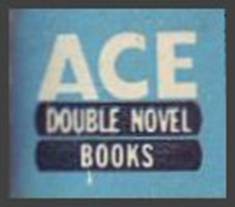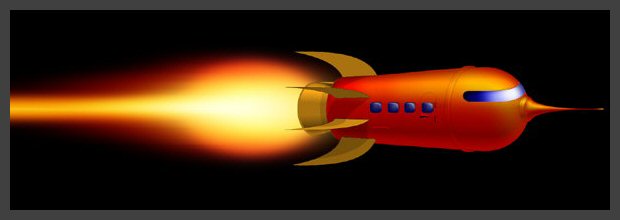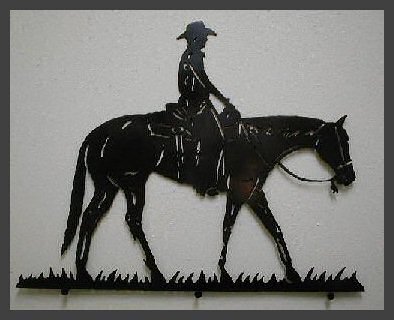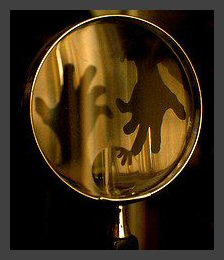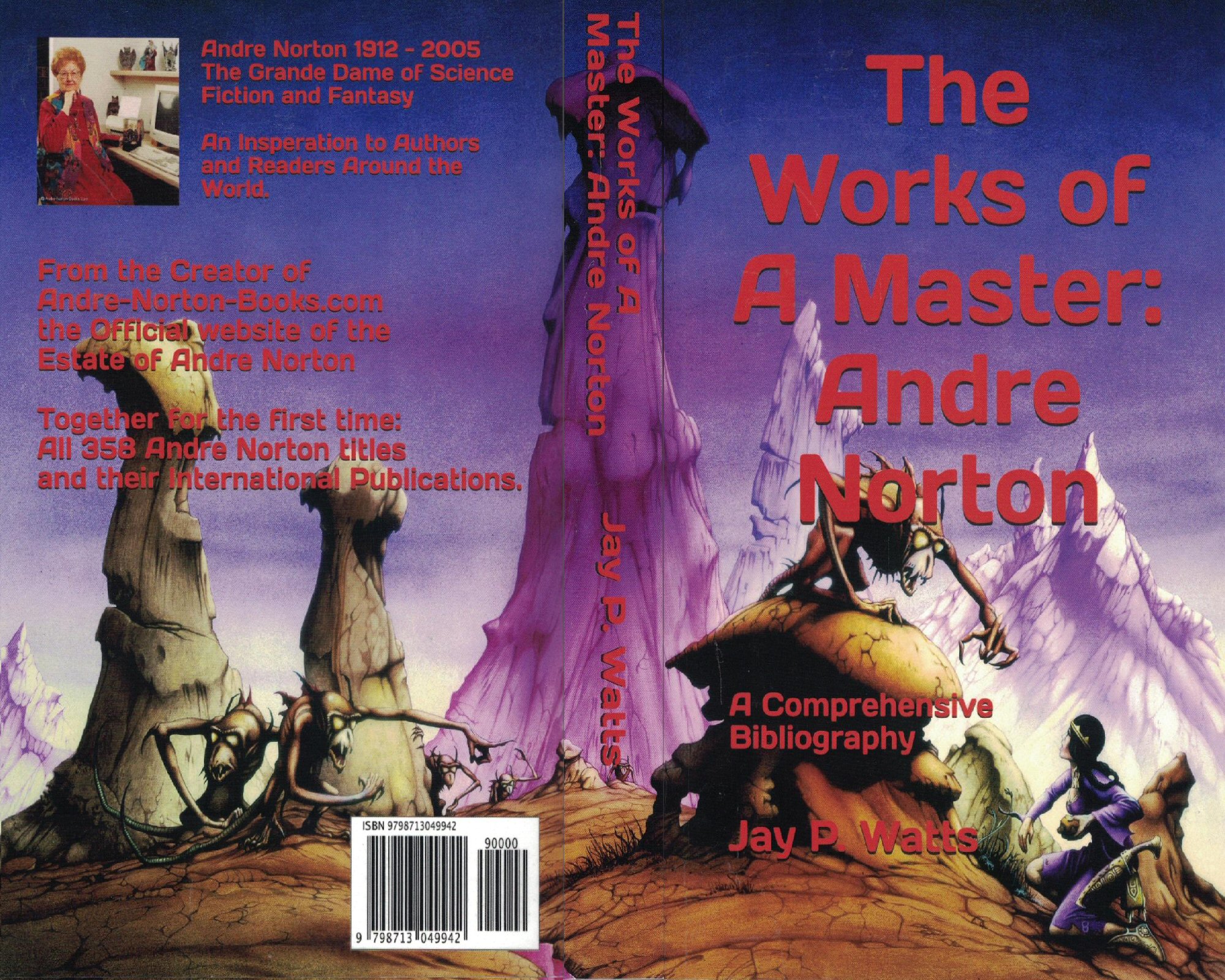To return to Andre-Norton.com click on either the Special Sections or Andre Norton links above and to the left.
A Special Interest Section

A Partial Collection; Image from the internet
Since I was a youngster I have been interested in the books by ACE Publishing know as ACE Doubles. When I was kid for just a little piece of my weekly chore money I could get 2 stories in one book that fit in my back pocket. I bought a lot of them. My only regret is that I did not save them. Of course with their construction, after carrying them around in my pocket and trading them with friends for other titles, if I had saved them they would be just a pile of pages.
Then the internet came along. And for nostalgia sakes I started looking them up. There is only one site that really addresses them, that being http://people.uncw.edu/smithms/ACE.html by Michael S. Smith @ UNCW, but I have a couple of problems with that site. The first is the backgrounds used on the site make it really hard to read. Especially for any length of time. The second is the way the wonderful cover-art is displayed, I find it clumsy, and a fair amount of the scans just are not that good. There is a site called http://www.bookscans.com/index.htm which has better scans but they only show covers, no publishing info at all. There is also ISFDB and Wikipedia for which I like as research resources but not to browse.
So I decided to create my own collection of the data (compiled from the various sites cited and a couple others not worth mentioning) and the cover-art from whatever site has the best images. What do they have to do with Andre Norton, you ask. Well she does have her name on 17 of them. If you want to see the ACE Doubles for Andre Norton alone go here. I've never counted the total ACE Double Editions but I'm sure it's not much more than 2 thousand. To keep from creating another website I have chosen to share them with you here. Hope you enjoy.
Author names highlighted as links will take you to that authors Wikipedia page. I have included notes* about authors and artists that I find particularly interesting, they appear only once per name. As most of the Western and Mystery authors do not have a Wikipedia page, I chose not to bother with that funtion in those sections.
Lets briefly discuss the layout. There are three main sections, Science-Fiction, Western, Mystery. Each category has multiple pages split up into the catalogue numbers assigned to each book. You can use the Menu over on the right to access the pages. >
Or if you know the Number, Title or Author put it in the search window and it will point you to it. (Along with any Norton page that may have the same info.)
Jay P. Watts aka: Lotsawatts
* Most of the notes are by Michael S. Smith @ UNCW
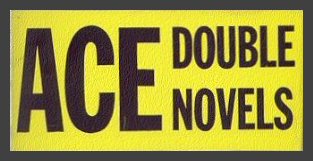
ACE Double were published for 21 years, from 1952 to 1971 and came in several formats. The most familiar format for the ACE Doubles is a single volume and has two texts bound together where one text is rotated 180° relative to the other so that when one text runs 'head-to-tail,' the other runs 'tail-to-head.' This type of binding is properly termed tête-bêche (from the French meaning "head-to-toe") rather than the commonly applied term dos-à-dos (from the French meaning "back-to-back"). Books bound in the tête-bêche manner have no back cover, but instead have two front covers and a single spine with two titles. This allows each story to have a separate cover, with appropriate artwork. When a reader reaches the end of the text of one of the stories, the next page is the (upside-down) final page of the other work (or in the case of many ACE Doubles, advertisement material for purchasing other ACE Doubles).
The dos-à-dos format also binds two stories together, but the orientation is not inverted as in the tête-bêche format. Books bound in the dos-à-dos manner have two front covers but have also have two spines. The orientation (back-to-back) places both stories in the same upright format, but the front story is read 'left to right' while the back story is read 'right to left.'
The format for the ACE Double in the D-, F-, M-, or early five-digit letter number sequence was tête-bêche. However, in the later five-digit letter number sequence, the binding format changed to a binding where the two separate books are bound together in a 'follow-the-leader' format. This results in a book with a single front cover and separate back cover. Often there was only a single page between the end of the first story and the beginning of the next where advertising was placed. In later editions, this page was often not present and the next story started on the page following the end of the first tale.
ACE Books used the tête-bêche binding format as a marketing technique, but the binding style has spread to other publishers for various genres. (Michael S. Smith, UNCW)
The ACE Publishing five numeral series does not follow a number-logical format. The five number code started in January 1969. Using this system, ACE first divided 99999 among the twenty-six letters of the alphabet (with some letters such as "b" obviously receiving a larger range of numbers than other letters such as "q"). By this system, "A" runs from 00000 to at least 03800, "B" to 08900, "C" to 12400 and so on. The number ACE assigns any title is determined by the first word in the title (ignoring the common articles, "a", "an" and "the"). For example, if the first word is EMPIRE (as in Empire Star), the assigned number 20571 comes from the "E" range.
With an ACE SF Double, the assigned number is given only to one of the stories usually in alphabetical order but not in all cases. The January 1969 ACE SF double, The Fall of the Dream Machine and The Star Venturers, is 22600. This number falls in the "F" section of the numbering scheme and the code refers to the "Fall " story. The next double published is The Rim Gods and The High Hex and is 72400, in the "R" section of the numbering scheme. In particular, it is important to know about this system. This numbering scheme allowed ACE to keep track of the number of printings for any story. This information is found in the last digit. Generally, first printings were given the digit zero (0) or five (5). However, this was not always followed. For example, when The Rim Gods was reprinted in 1978, its number was 72401, indicating a second printing.
There exist some titles that are categorized as "ACE Doubles" but do not state such on the cover, or they state something like "Two Complete Novels". Most of these titles have only one cover as opposed to the back-to-back covers. They can be found listed separately on the "Single Covers" pages.
The listing "complete and unabridged" is a result of action by the Federal Trade Commission (FTC) in the post-WWII publishing industry. To counter the wide-spread belief by the book-buying public that paperback books were always shortened version of the original hardcover texts, publishers were required by the FTC to prominently indicate on the front cover if there was an original title (often shown in parentheses) and to state that the book was either an "abridgement" or identical to the original text (listed as "complete and unabridged"). Source: Thomas L. Bonn Undercover: The Illustrated History of the American Mass Market Paperback (1982; Penguin Books; pp. 56-57).
Click to enter Sci-Fi
Click to enter Westerns
Click to enter Mysteries
